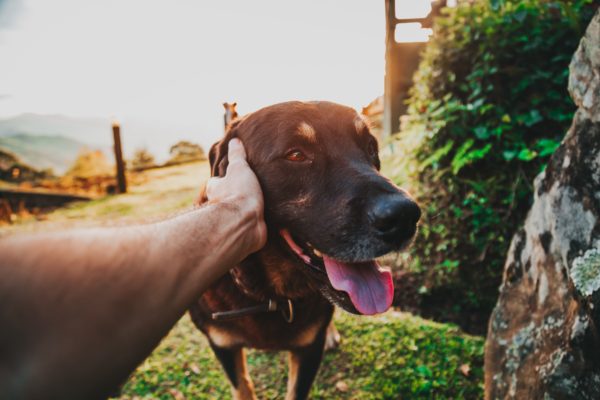 As any loving pet owner knows, a cat or dog can feel like a member of the family — especially if they’ve been by your side for years. Watching your loyal furry friend get older can be difficult. Senior pets may experience problems with mobility, for instance, and are prone to a number of geriatric diseases, including cancer and diabetes. You can keep your pet happy and healthy for longer by making some small adjustments to your home. Find out how to accommodate an elderly animal below.
As any loving pet owner knows, a cat or dog can feel like a member of the family — especially if they’ve been by your side for years. Watching your loyal furry friend get older can be difficult. Senior pets may experience problems with mobility, for instance, and are prone to a number of geriatric diseases, including cancer and diabetes. You can keep your pet happy and healthy for longer by making some small adjustments to your home. Find out how to accommodate an elderly animal below.
Get a Fence for Outside
Senior animals are likely to experience a decrease in hearing and vision, which can expose them to dangers outdoors. They will be less likely to hear cars in the street, for example, as this research on deafness in dogs and cats from Louisiana State University’s School of Veterinary Medicine points out. Keep them safe by restricting their outside activities. If you don’t have a fence around your yard, get one installed to keep them away from roads.
Create a Clear and Consistent Path Inside
A loss in ocular and auditory abilities may also make it difficult for animals to navigate the interior of their home. Keep the corridors of your house clear of obstructions like shoes and toys on the floor. Try not to move items your pet needs regularly, such as their food bowl or litter box, and avoid making major changes to your furniture arrangements.
For dogs experiencing blindness, the American Kennel Club recommends creating a “rug path.” Lay down a strip of separate material they can feel with their paws and follow to important points, like their pet bed. Check out these pointers on how to train your senior pup to stick to the trail you’ve created for them.
Invest in Pet Stairs or Ramps
Older cats and dogs are prone to joint problems such as arthritis and won’t be as agile as sprightly kittens and puppies. Pet ramps or stairs allow for ease of access: Stairs can help your feline reach her favorite windowsill perch, for example, while a ramp will assist your canine into the car. This Vet Street article explains how you can teach your dog to use a ramp. Before purchasing one, however, take a look at this online guide for details on how to get the right size depending on weight and height.
Establish a Quiet Space
Just like people, animals require more rest as they get older. Simple everyday tasks such as going for a walk demand much more energy. So, accommodate your pet’s need for relaxation by giving them a private space where they will be unbothered by other people or animals in the home. Set aside their dog or cat bed along with a comfort object, whether it’s a T-shirt that smells like you or a favorite toy. If you have kids, make it clear that when the cat or dog is cuddled up here, they shouldn’t be disturbed.
Be Prepared for Accidents
Aging cats and dogs alike may experience incontinence due to decreased bladder muscle tone and weakened nerve impulses. For fresh stains, soak up as much of the liquid as possible and rinse the area with cool water before blotting dry. If it’s already dry, use a carpet stain remover. Stay away from steam cleaners, which will set the stain, as well as chemical cleaners — their strong odor may encourage your pet to mark the area again.
To prevent future damage and save on stress and money, look into washable pee pads. These absorb liquid and can be placed around the house. Above all, remain patient with your pet and remind yourself they aren’t doing this on purpose. Incontinence is just part of the package when it comes to caring for a senior animal.
Taking care of your senior pet will require a bit of work, but ensuring they’re healthy and comfortable will allow them to enjoy their golden years. Although they might not get around as easily as they used to, your pet is still the faithful companion you know and love.
Article by Tyler Evans tyler@dogzasters.com
Photo Credit: Photo by Matheus Bertelli from Pexels